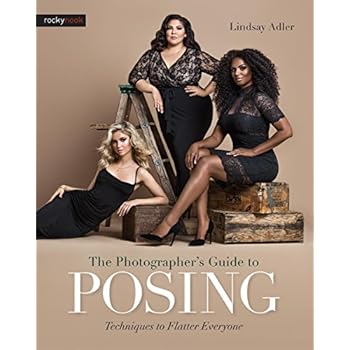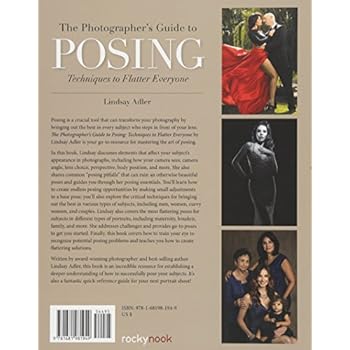The Photographer's Guide to Posing: Techniques to Flatter Everyone
Category: Books,Arts & Photography,Photography & Video
The Photographer's Guide to Posing: Techniques to Flatter Everyone Details
About the Author Fashion photographer Lindsay Adler has risen to the top of her industry as both a photographer and educator. Based in New York City, her fashion editorials have appeared in numerous fashion and photography publications, including Marie Claire, InStyle, Noise Magazine, Zink Magazine, Elle, Rangefinder, Professional Photographer, and dozens more. As a photographic educator, she is one of the most sought after speakers internationally, teaching on the industry's largest platforms and most prestigious events, having been named one of the top 10 best fashion photographers in the world. Lindsay has worked with some of the top brands in the photographic and related industries such as Canon, Adobe, and Microsoft.A clean, bold, and graphic style has become the hallmark of her work, whether shooting advertising campaigns, designer look books, jewelry, hair campaigns, fashion editorials, or professional athletes. Lindsay is renowned for her creativity and collaborating with designers and stylists in order to create fresh looks.Author of five books, she is always working on new ways to share her passions and knowledge with others. Each year she teaches to tens of thousands of photographers world-wide through prestigious platforms such as creativeLIVE, KelbyOne, and the industry's biggest conferences. Read more

Reviews
This book was my first introduction to posing, and on the whole I really enjoyed it.Pro: The material is great. Lindsay Adler is an amazing photographer, and she has a real knack for both explaining things clearly and visually illustrating what she's talking about with do/don't images, pull-back shots when necessary, and an occasional bit of diagramming on top of an image. The key to this book vs. the kind of static guides to different poses I've tried looking at before is that she's not giving you a list of positions to contort people into, she's laying out a set of basic principles you can use to (a) figure out how you want someone to look, and then (b) arrange them into a position that fulfills that look you're going for. And then at the end of the chapter she'll give you a small list of positions you can contort people into, just in case you lack the imagination to get started on your own ;)Neither pro nor con: While this book is pretty substantial size-wise, it's still not nearly comprehensive, which you come to realize pretty quickly it simply couldn't be without being a whole lot bigger. However, given the amount of material, I found some of the content choices suboptimal, personally. Including an entire chapter on boudoir posing seemed like an unusual choice while what I would expect to be some more common scenarios--especially working with children and posing non-family groups--were left out. Of course, if you shoot a lot of boudoir that's great for you, so ymmv. By the end of the book I kind of came out with the feeling that this was less a comprehensive posing guide and more of an introduction and long form advertisement for the copious amount of instructional video material she has online. Which I have to admit I fell for; I've since bought three of her CreativeLive courses.Con: The editing in this book is very sloppy, which is what kept this from being a five star review. There are several places in the book where the figure numbers she refers to don't actually match the images she's talking about. e.g. she'll say "The problem with image 3.19 was [x] and I fixed it in image 3.20 by doing [y]," but the two images she's talking about will actually be 3.17 and 3.18. Presumably in this case an image was added removed and the references in the text not updated.Worse yet, at times the text will refer to an image that's not actually present under any numbering, or an image will have the wrong caption directly underneath it. These may seem like minor issues, but it can be very confusing for a beginner to read something, look at the referenced image, see that the two don't match up, and then take quite a bit of time to try to figure out if the book is wrong or if you're just badly misunderstanding what it is you're supposed to be looking at.There's also an entire section of chapter 3 (on problematic expressions) that's alluded to, but then the chapter just abruptly ends without the promised section. I assume this is because an editor axed that part of the chapter but forgot to remove the intro text for it.



